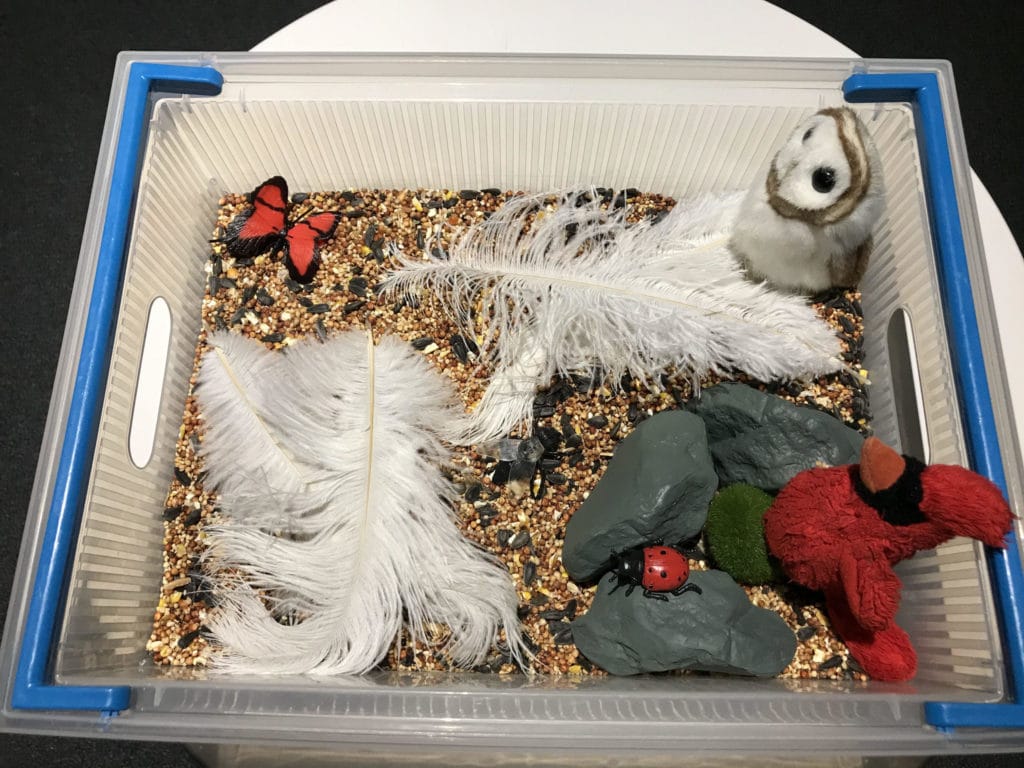We have a great sensory bin idea for you–create a Flying Animals Sensory Bin with materials you have at home!
What is a Sensory Bin?
Sensory bins are great tools for younger children or children who might have sensory processing disorders to experience some relaxed sensory learning activities. For example, a sensory bin might include textures that encourage fun or textures that you might want your child to get used to (like sand perhaps) as well as goaled learning activities, like foam letters or numbers. In this activity, we suggest including toy animals to learn more.
Flying animals living in different ecosystems use the materials they have at their disposal to their advantage, but not every ecosystem is the same; cardinals may use a very different strategy when building their nests up high in trees than a sandpiper, who typically construct simple nests near the shores where they search for food. The same can be said for various insect species and even mammals like bats. You can choose multiple flying animals as inspiration for a sensory bin, too!
Materials Recommended
- 1 small/medium-sized bin
- Bird seed (or a granulated substance like rice or sand)
- Plastic insects/birds/bat toys
- Sticks or fake grasses
- Rocks
- Feathers*
*Be careful not to use feathers you find outside—these can carry a lot of different germs! Use craft feathers instead.



Directions
- Pour enough bird seed or granulated substance into your large container to cover the bottom completely.
- Decide what animal you want your bin to focus on (you can also create an entire ecosystem with multiple animals!).
- Where does this animal live? What types of materials would be in its habitat (sticks, rocks, etc.). If the animal lives in a cold place, how would they keep warm? What would they need in a habitat with little water?
- Place your animals and other materials inside the sensory bin. Get creative! Do some of your flying insects like to burrow? Place them under the seeds and out of sight.
We’ll be working on more sensory friendly content as soon as we can, find it on our Sensory Friendly Saturdays Page.
For more activities to complete with your household, check our our Super Science Saturday Page.


